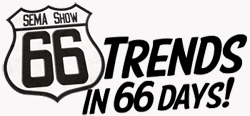2 Things to Know About How Consumers Perceive Price

In the research study cited by Decode, example “B” on the right produced 28% more sales because the smaller type size used for the sale price matches the brain’s perception of a “smaller” price.
Today we’ll give you a look at how consumers perceive prices when shopping according to Decode Implicit Marketing.
How you present a price greatly affects if a consumer perceives the product as “expensive” or “cheap.” Research shows that typeface, size of the price or dollar symbol and other characteristics have an effect on of price impression and consumer buying behavior. How you present the price can also influence whether consumers will believe it to be “too high” or “fair.”
1). How far apart you space a “regular” price and a “sale” price can have an effect on how consumers perceive the difference between the two prices. When spacing two prices, the greater the horizontal distance between an original price and a discount price, the greater the perceived difference between the two prices. This effect works only on the horizontal axis, by the way.
2). When the size of the number matches its type size, people process the numbers more quickly and intuitively (see example at left). In other words, big numbers are depicted large and small numbers depicted small in the mind, so by depicting original prices larger and the lower sale prices smaller, you can make a customer’s decision to purchase much easier.
(Source: “Cognitive Science” by Decode Implicit Marketing; March 2011)
What other interesting research have you seen about how consumers perceive prices when shopping?
Check our blog tomorrow when we reveal how enthusiasts decide where to buy.
#SEMAshow #66trends #AAPEX2013



